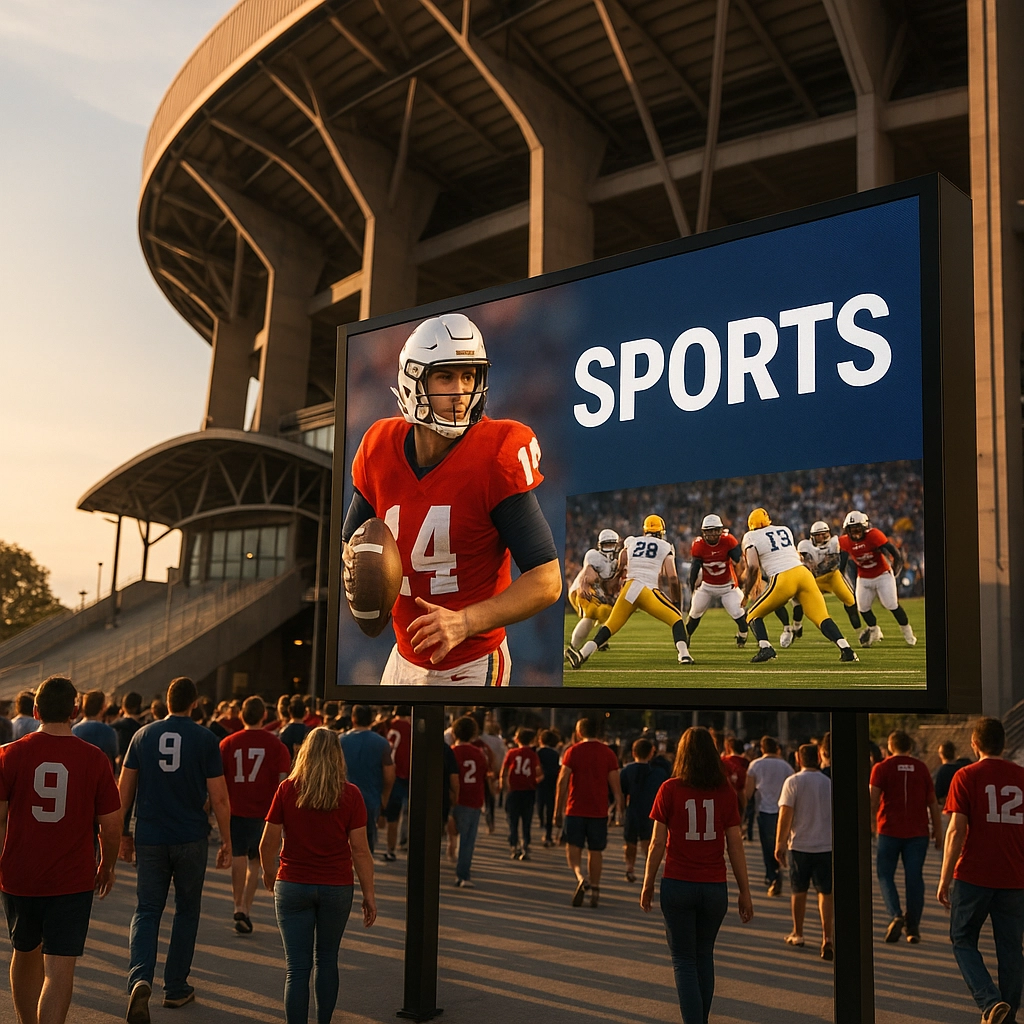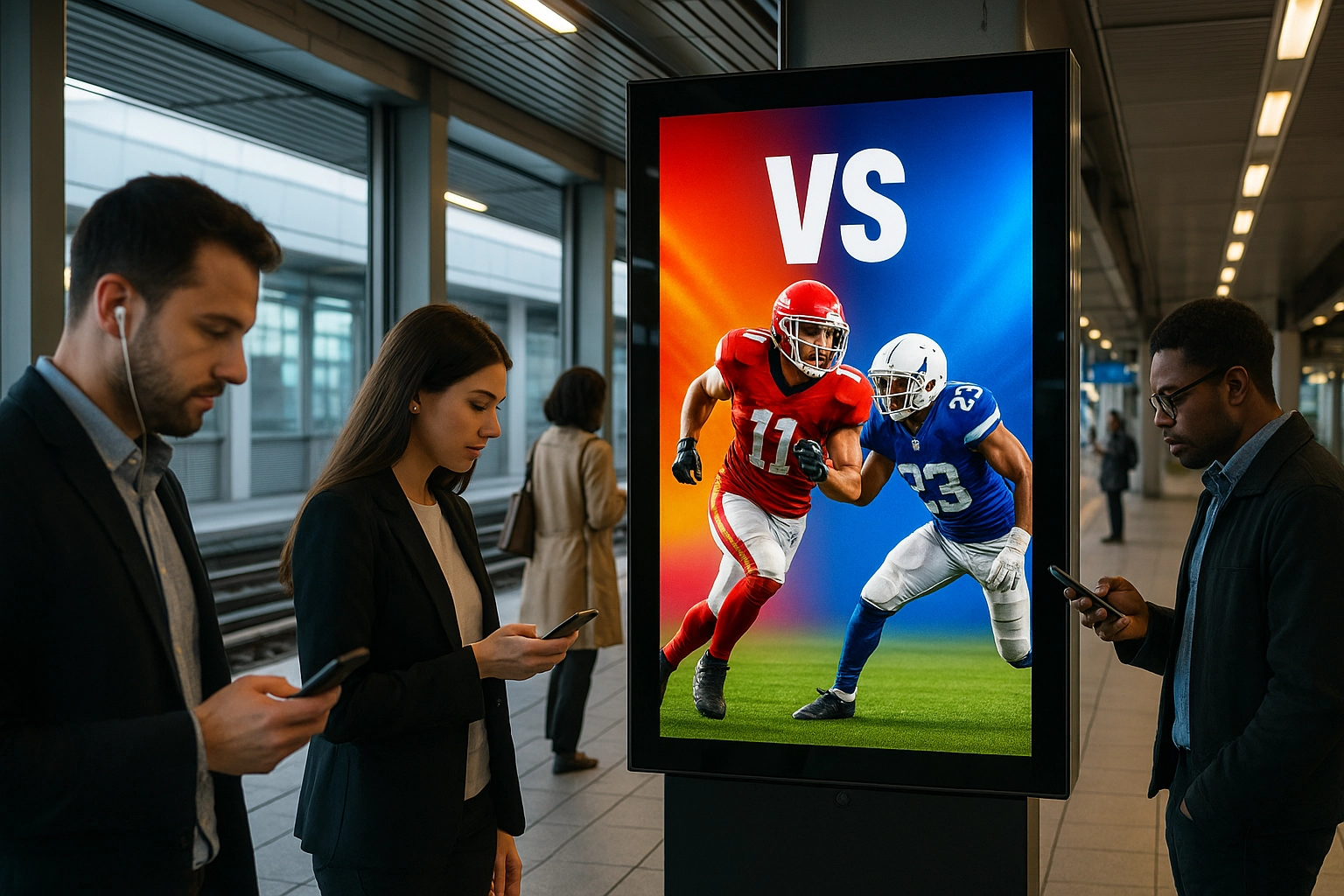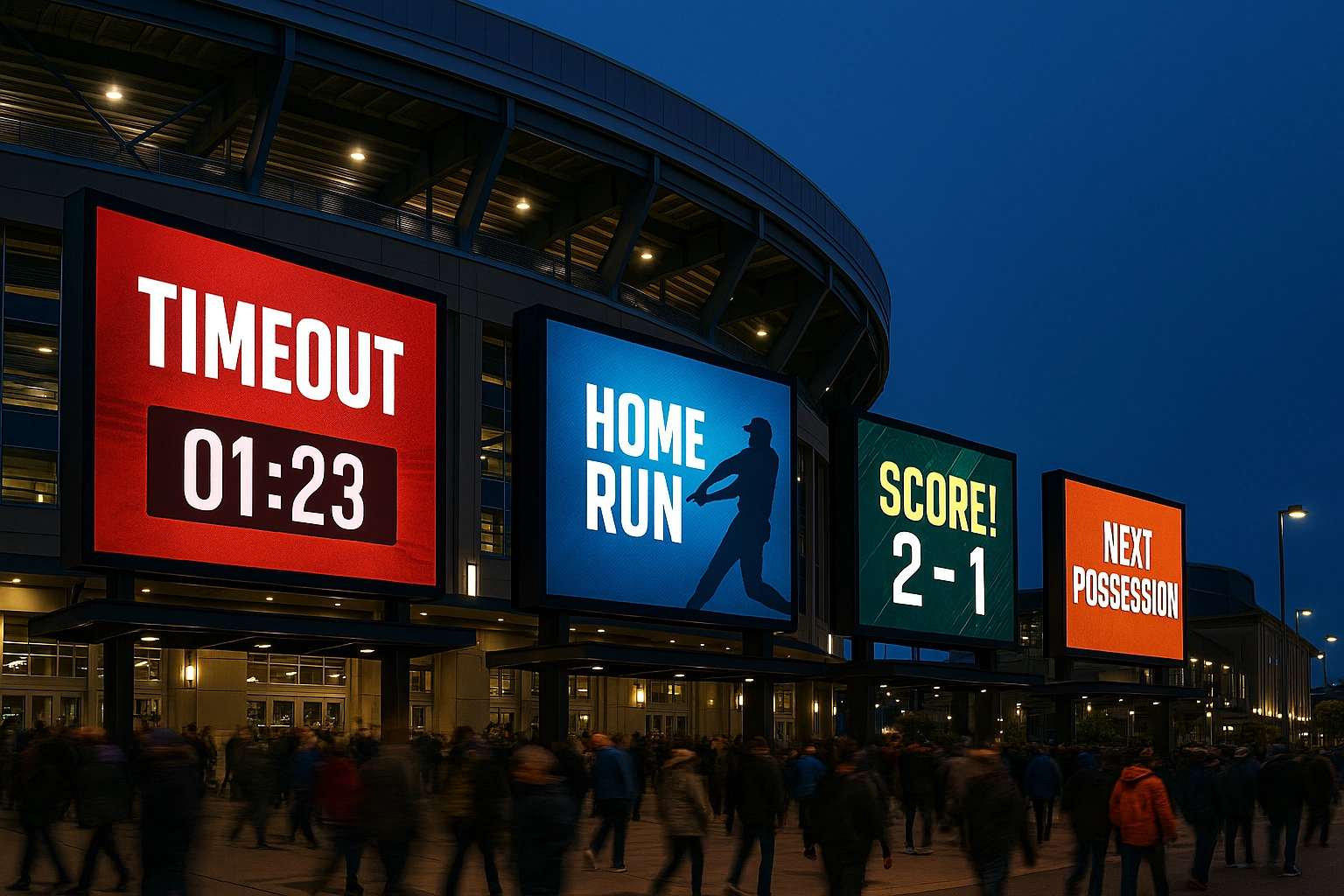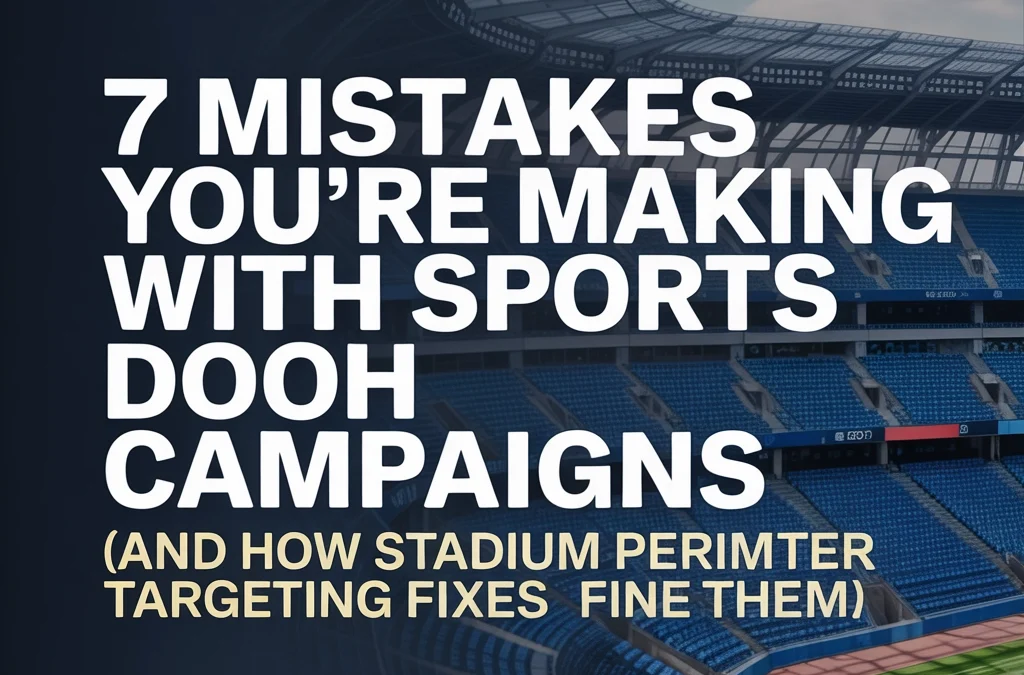Answer Engine Optimization: Stadium perimeter targeting fixes seven critical Sports DOOH campaign mistakes: poor geographic targeting, missing key moments, inadequate venue context, overlooking digital integration, insufficient reach extension, static creative approaches, and weak performance measurement through proximity-based programming around sports venues.
Sports DOOH campaigns represent a $50 billion opportunity by 2030, yet many brands consistently underperform due to strategic missteps that stadium perimeter targeting directly addresses. These seven common mistakes cost advertisers millions in wasted impressions while missing prime opportunities to engage passionate sports audiences.
Share this post: LinkedIn | Facebook | Instagram | X
Mistake #1: Geographic Targeting That Misses Local Fan Loyalty
Sports marketers frequently deploy broad geographic targeting strategies that ignore regional team loyalties and local market dynamics. This approach wastes budget on audiences with zero connection to featured teams or events, particularly in markets with fierce local rivalries.
Traditional DOOH campaigns often target entire metropolitan areas without considering that sports fandom operates on hyperlocal levels. A campaign promoting visiting teams in hostile territory generates negative sentiment rather than engagement.
Stadium Perimeter Targeting Solution: Proximity targeting within defined radiuses around specific venues ensures messaging reaches relevant local fan bases during peak engagement windows. This strategy leverages geographic segmentation to align campaign messaging with local team preferences and market dynamics.

Mistake #2: Ignoring Peak Fan Engagement Moments
Campaign timing represents a critical failure point when sports marketers run generic schedules without optimizing for peak fan engagement periods. Sports audiences exhibit distinct consumption patterns tied to game schedules, team performance, and seasonal momentum.
Many campaigns operate on traditional advertising schedules that miss pre-game excitement, post-game discussions, and playoff intensity periods when fan engagement reaches maximum levels.
Stadium Perimeter Targeting Solution: Dynamic scheduling around venue-specific event calendars captures audiences during optimal engagement windows. Day-parting strategies combined with proximity targeting reach fans traveling to games, gathering at nearby establishments, and participating in post-game activities when sports content resonates most effectively.
Mistake #3: Contextually Irrelevant Venue Placement
Advertisers frequently place sports content in environments where audiences lack appropriate mindset or interest in sports messaging. This contextual mismatch reduces engagement rates while wasting impressions on audiences in professional, retail, or family-oriented environments where sports content feels intrusive.
The disconnect between message content and venue context diminishes campaign effectiveness and can generate negative brand associations when sports messaging appears in inappropriate settings.
Stadium Perimeter Targeting Solution: Venue-specific targeting ensures sports messaging appears exclusively in contextually relevant environments where audiences already demonstrate sports interest. This includes screens at transit stations near venues, sports bars, restaurants, and entertainment districts where fans naturally congregate before and after events.
Mistake #4: Missing Digital Integration Opportunities
Traditional outdoor advertising approaches ignore digital ecosystem integration, treating DOOH as an isolated channel rather than part of comprehensive omnichannel strategies. This disconnected approach fails to leverage modern consumers’ expectation for seamless digital experiences across touchpoints.
Sports fans actively engage with social media, mobile apps, and digital content throughout their fan journey, yet many DOOH campaigns operate independently from these digital behaviors.
Stadium Perimeter Targeting Solution: Programmatic DOOH platforms enable integration with mobile targeting and social media activations, creating cohesive digital ecosystems that follow fans from venue approach through post-game social sharing. This approach mirrors successful campaigns like Nike’s NYC Marathon activation that seamlessly blended outdoor and digital messaging.

Mistake #5: Insufficient Audience Reach Extension
Single-touchpoint strategies limit campaign effectiveness by relying on isolated exposures rather than comprehensive coverage throughout the fan journey. This approach reduces the likelihood that target audiences encounter messaging during decision-making periods.
Sports fans follow complex journey patterns that include travel planning, venue arrival, game attendance, post-game activities, and extended social engagement that single-location campaigns cannot adequately address.
Stadium Perimeter Targeting Solution: Point-of-interest targeting through DOOH demand-side platforms deploys media assets across multiple proximity zones around venues, creating comprehensive coverage that increases exposure probability significantly. This strategy surrounds key locations with strategic messaging, ensuring ideal customers encounter campaigns multiple times throughout their sports experience.
Mistake #6: Static Creative Execution
Many sports DOOH campaigns utilize static creative assets that ignore real-time opportunities for dynamic messaging based on game conditions, weather, team performance, or fan emotions. This approach wastes the unique capabilities of digital platforms that can adapt messaging instantly.
Static creative approaches fail to capitalize on momentum shifts, unexpected outcomes, or viral moments that define sports marketing success stories.
Stadium Perimeter Targeting Solution: Real-time creative optimization around stadium locations enables dynamic messaging that responds to live game conditions, weather patterns, team performance, and social media trending topics. This capability allows campaigns to participate in cultural moments rather than simply broadcasting generic messages.

Mistake #7: Inadequate Performance Measurement Systems
Attribution challenges plague sports DOOH campaigns when marketers struggle to connect outdoor exposure to measurable business outcomes. Without proper measurement frameworks, campaign optimization becomes impossible and ROI demonstration remains elusive.
Traditional measurement approaches fail to account for the complex customer journey that sports fans navigate from initial awareness through final conversion, particularly when multiple touchpoints contribute to decision-making.
Stadium Perimeter Targeting Solution: Location-based attribution models provide clearer performance measurement by focusing campaigns within specific, trackable geographic zones around venues. This approach enables foot traffic analysis, mobile engagement tracking, and conversion metrics directly tied to stadium proximity and event attendance patterns.
Strategic Implementation Framework
Successful stadium perimeter targeting requires comprehensive coverage across multiple venue-adjacent touchpoints including transit stations, parking facilities, sports bars, restaurants, retail locations, and entertainment districts. These environments integrate naturally into fan journey patterns while providing non-intrusive advertising opportunities.
The strategy leverages sports fans’ predictable movement patterns around venues to create multiple exposure opportunities throughout extended engagement periods. Unlike digital channels that users can block or avoid, DOOH placements around stadiums become integrated elements of the fan experience.
Campaign success depends on understanding that sports engagement extends far beyond game attendance to include travel preparation, pre-game socializing, post-game discussions, and ongoing team loyalty expressions throughout seasons.
Measurement and Optimization Protocols
Effective stadium perimeter campaigns implement attribution systems that track device IDs exposed to DOOH messaging within venue proximity zones, measuring subsequent online engagement, store visits, and conversion behaviors. This methodology provides concrete ROI data that justifies continued investment and guides optimization decisions.
Performance measurement should include brand lift studies, awareness metrics, purchase intent tracking, and foot traffic analysis specific to venue-adjacent business locations. These comprehensive measurement approaches demonstrate campaign effectiveness across multiple business objectives.
The integration of location intelligence with campaign delivery platforms enables continuous optimization based on attendance patterns, weather conditions, team performance, and seasonal variations that affect fan behavior around venues.
Stadium perimeter targeting represents a strategic evolution in sports marketing that addresses fundamental campaign weaknesses while maximizing the unique advantages of location-based advertising. Brands implementing these solutions consistently outperform traditional approaches by reaching audiences when sports content resonates most effectively.
For expert guidance on implementing stadium perimeter targeting strategies that deliver measurable results, contact Dan Kost, CEO at OOH Sports: www.oohsports.com or call +1 (970) 703-0102.
What’s your biggest challenge with Sports DOOH campaign performance? Share your experience in the comments below.
Ready to optimize your sports marketing strategy? Contact our team for a personalized consultation on stadium perimeter targeting solutions.

